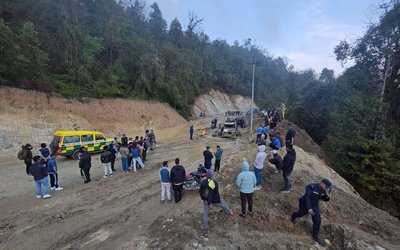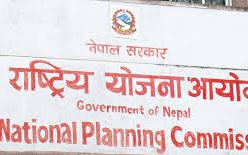Based on carefully taking the pulse, ghatavaidyas in Nepal determine the time when a seriously ill patient may die. With the advent of modern medicine there are fewer of these vaidyas now. But in years past, many relied on them to predict the hour of death for their loved ones so that religious rituals along the riverside could be auspiciously carried out. There are many stories of these riverside physicians making arbitrary,life and death calls on Aryaghat in Pashupatinath. After taking the pulse of a dying man, if the ghatavaidyas determine that death is imminent, the patient is put on a tilted slab of stone (Bhramanal) next to the water. Relatives then put a handful of the holy (albeit contaminated)Aryaghat water into the mouth of the dyingto facilitate salvation.Unfortunately sometimes people not quite dead yet, choke and aspirate water into their lungs.
But taking the pulse and making an important diagnosis is very common not only in Ayurvedic but also in Greek, Tibetan, Chinese, and Islamic medicine. In these traditional medicines, problems in the intestines, liver, gall bladder, kidneys, lungs and brain are determined by a careful assessment of the radial pulse. Even psychological health is determined by the pulse. Avicenna,the famous Islamic physician of the tenth century used the pulse as a lie detector to figure out that a sultan’s sick wife was actually pining for her lover and that nothing else was wrong with her. This is akin to the scene in countless Hindi movies where the doctor after studiously taking the pulse of a beautiful, unmarried womanand performing no other examination announces gravely to the parents, “Apkibeti ma bannewalihai” (Your daughter is pregnant).In modern medicine, to determine the seriousness of an illness the doctor uses the pulse as just one of the important means of assessing the patient. Light reflexes in the eyes, response to any kind of stimuli (especially pain), breathing, blood pressure are some of the other determinants besides the pulse which are included in the assessment. But figuring out the exact time of death is still scientifically very important. For example harvesting the organs for donation after death in people who have given consent needs to be done immediately after death to optimize the chances for that organ to work in another patient. Perhaps with some fine tuning the role of the ghatavaidyas could be expandedfor organ harvesting when Nepal is ready for this.

Buddha Basnyat MD
Buddha Basnyat, MD, MSc, FACP, FRCP, Director of the Oxford University Clinical Research Unit-Patan Academy of Health Sciences, Kathmandu.
- Altitude Sickness
- Feb 20, 2018
- Post-earthquake Nepal: The Way Forward
- Dec 13, 2015
- The Annapurna Sanctuary
- Nov 29, 2015
- Diarrhea at the Summit
- Nov 08, 2015
- Altitude Sickness ( AMS, HAPE, HACE)
- Oct 15, 2015















